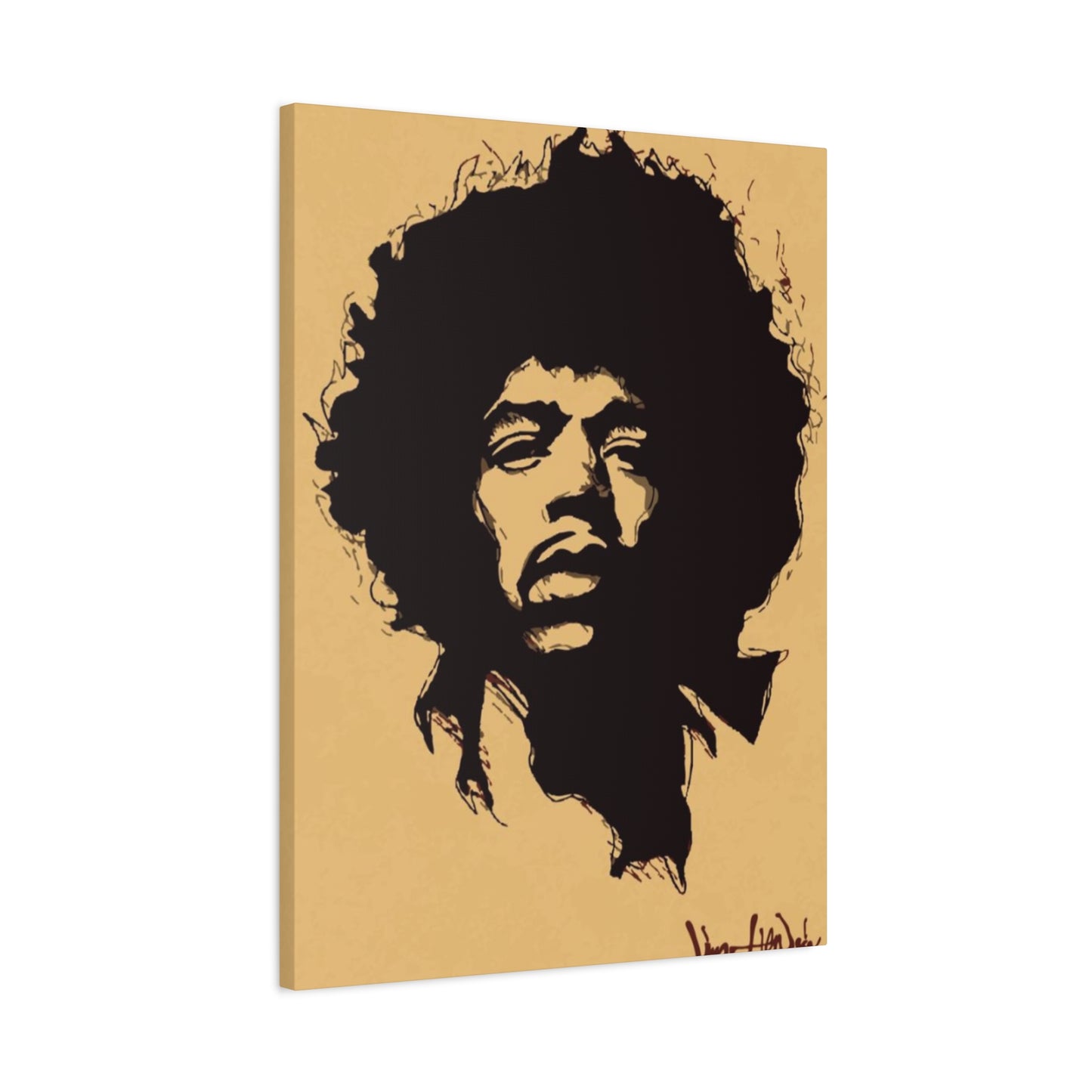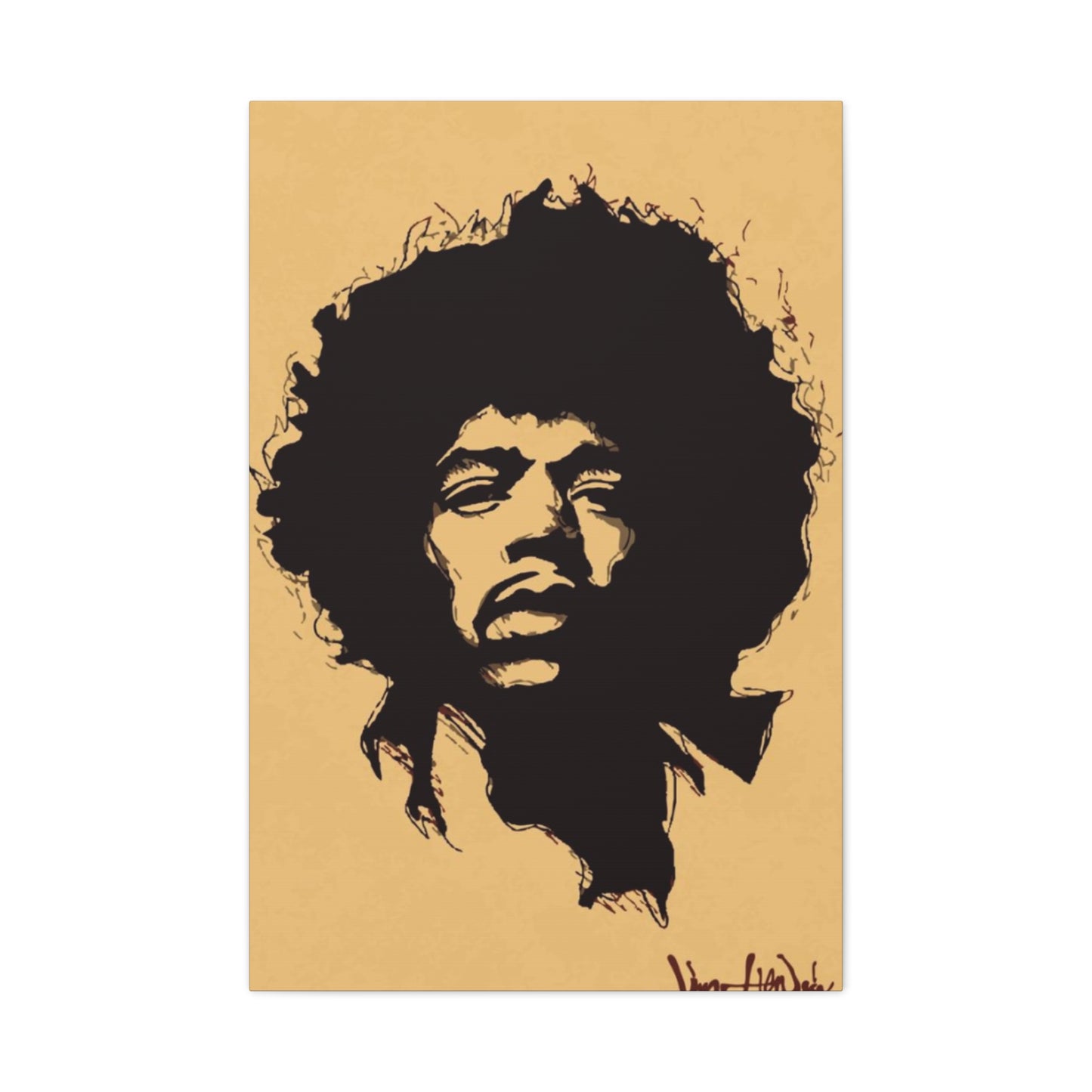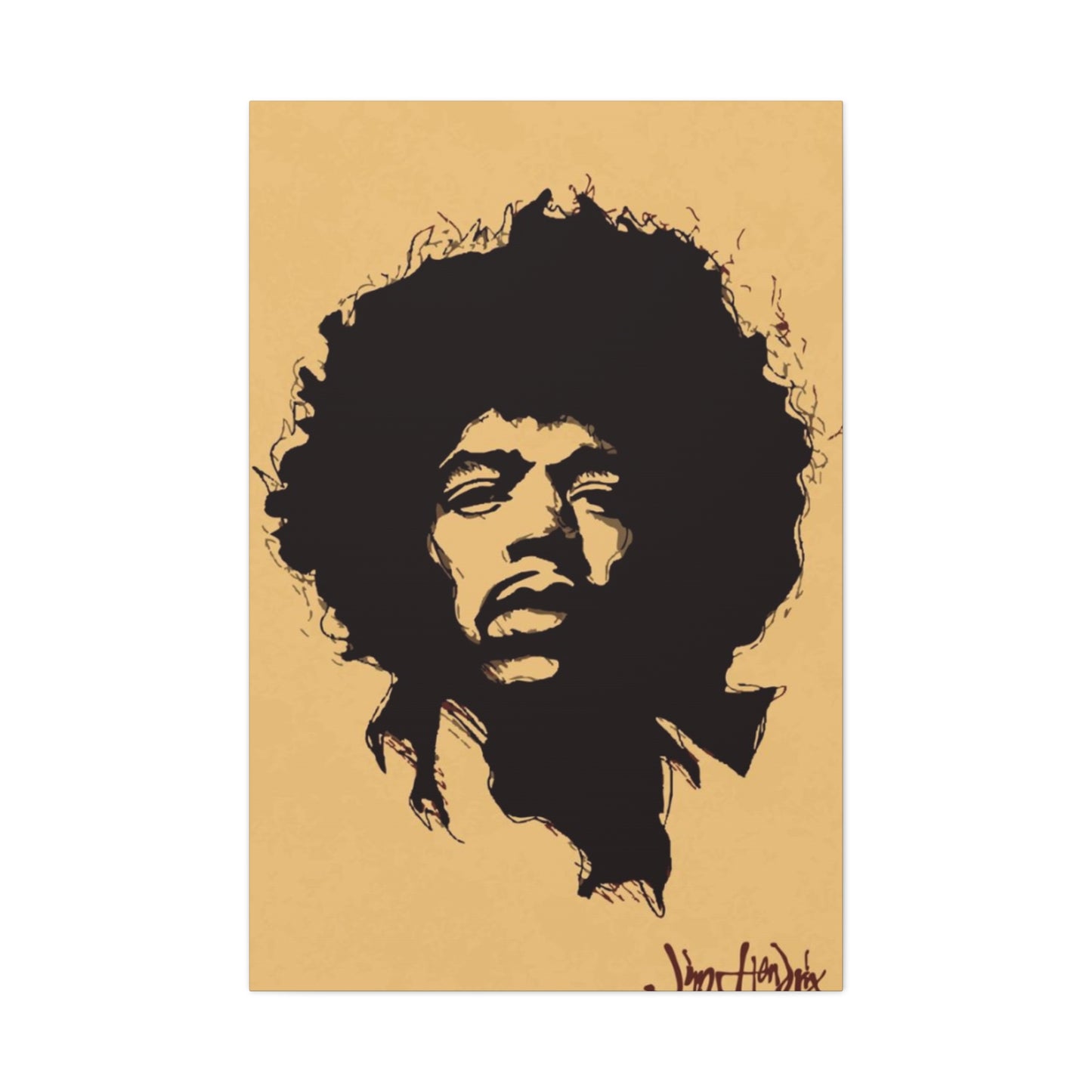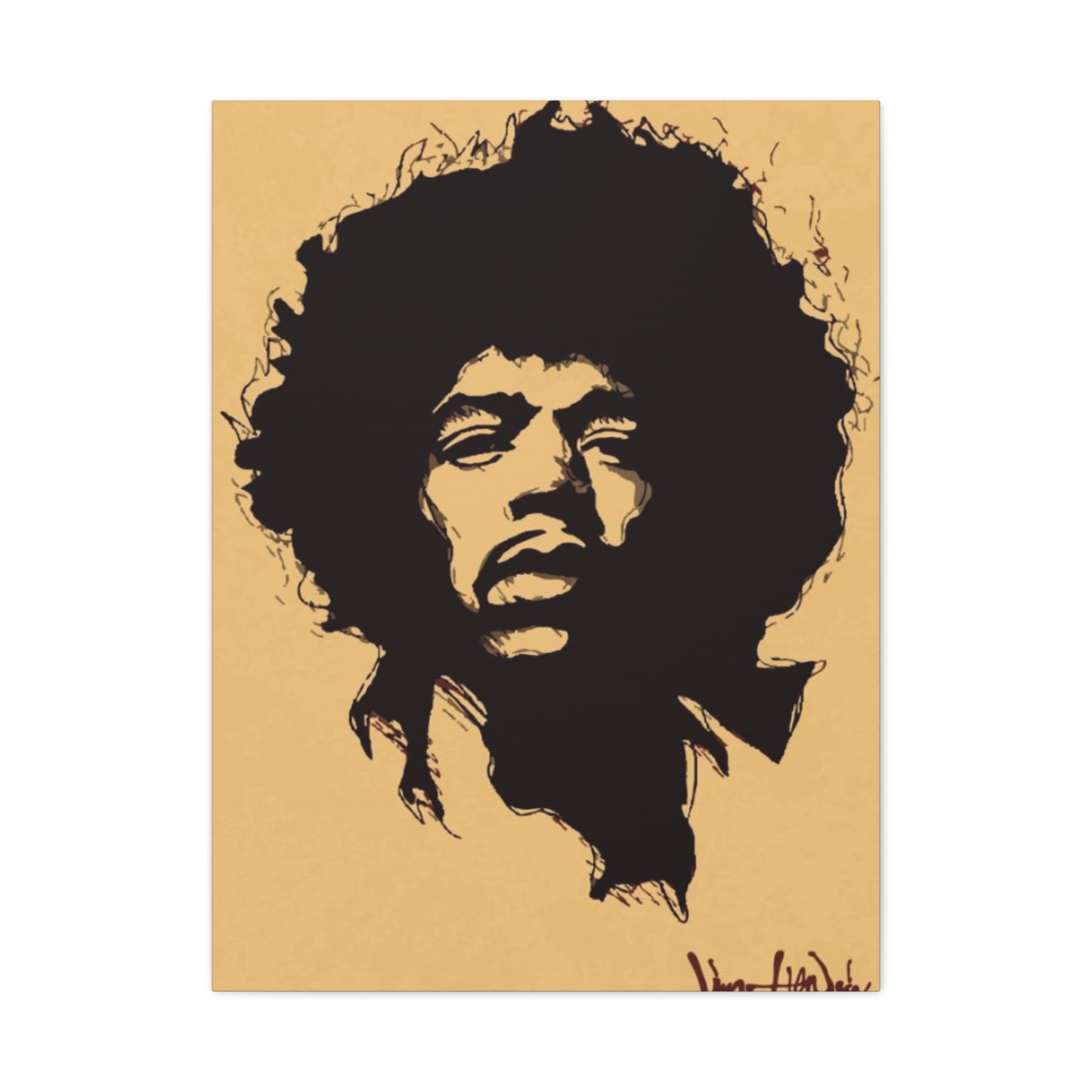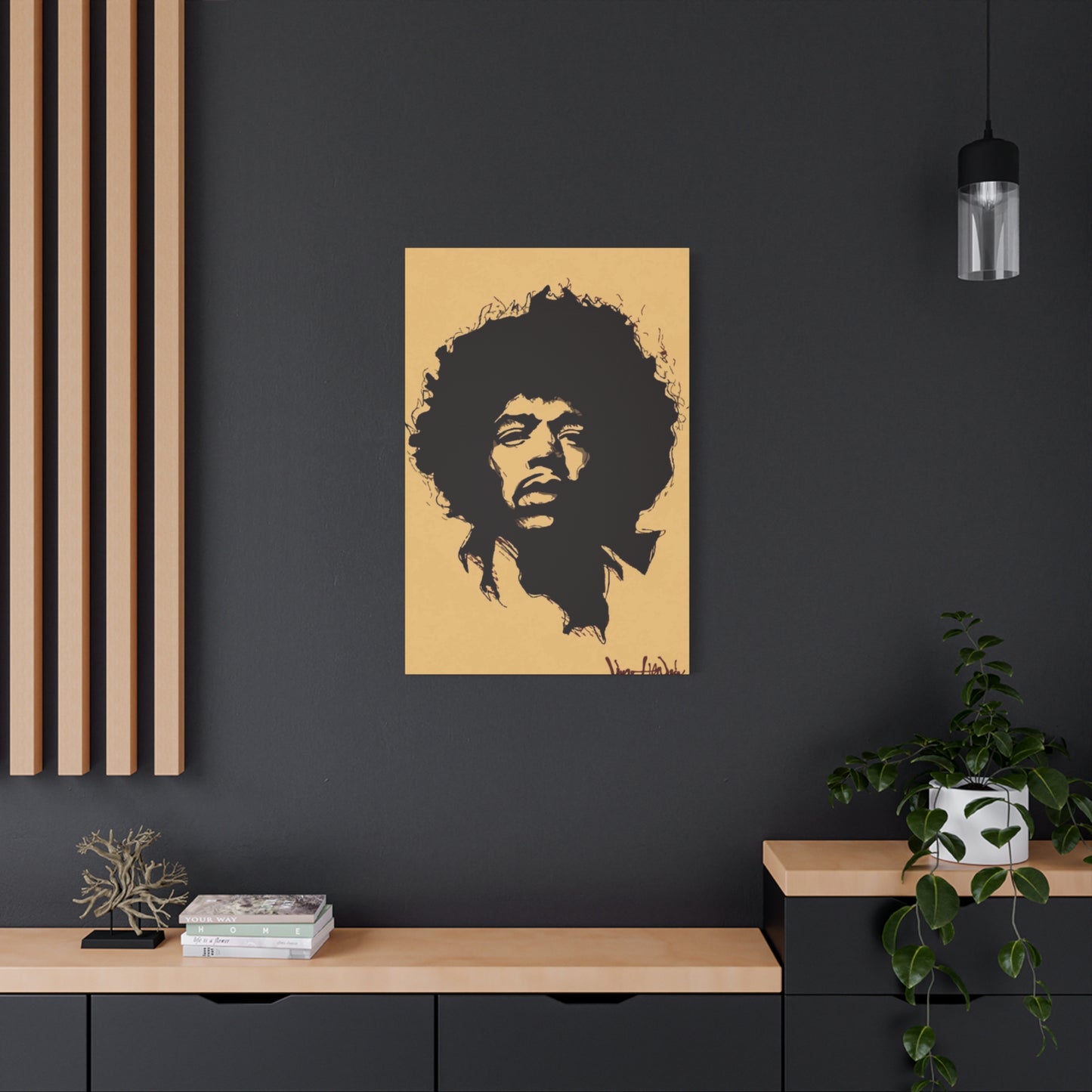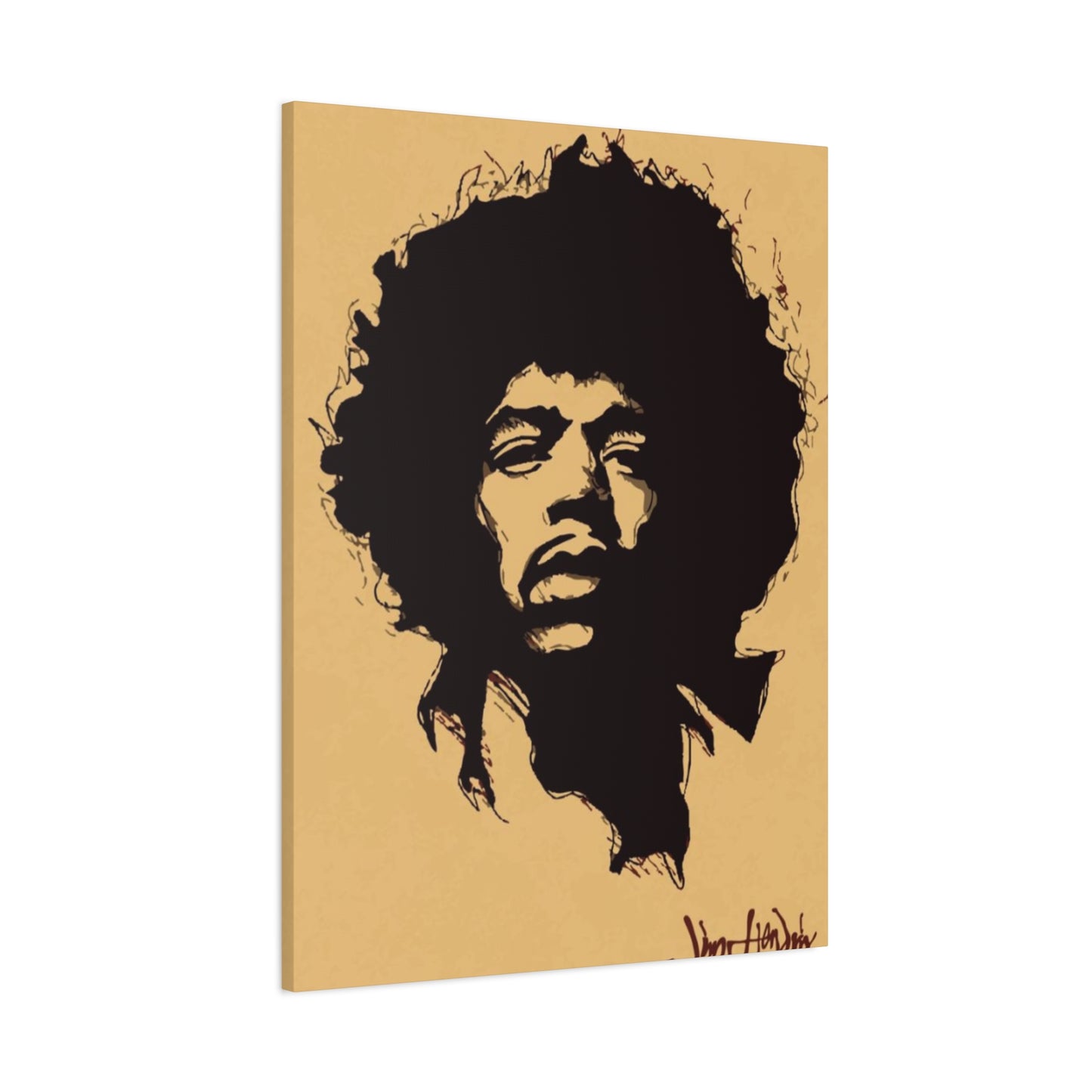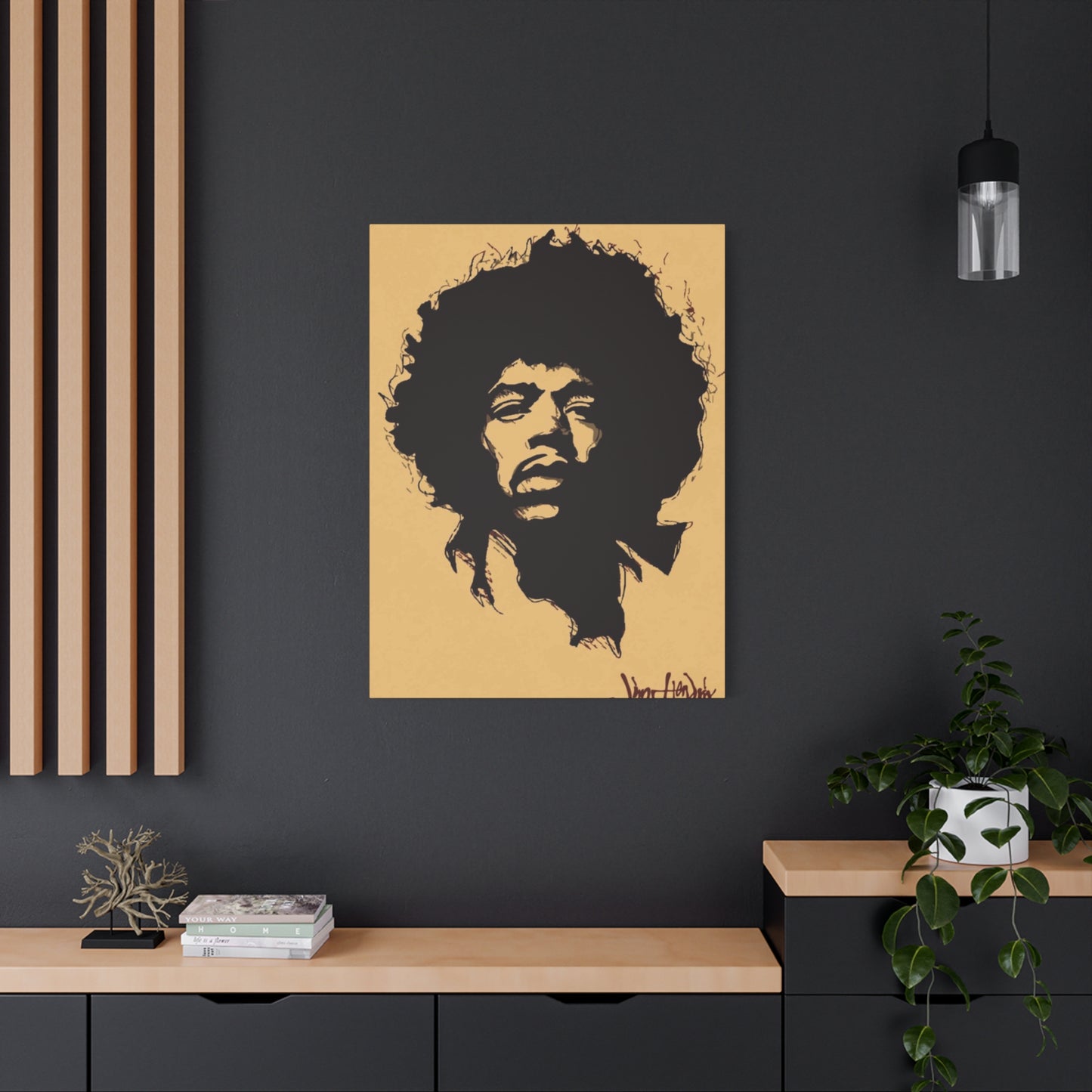Vintage Brown Hendrix Wall Art: Transform Your Home with Timeless Rock Decor
The legendary Jimi Hendrix continues to captivate music lovers and art enthusiasts decades after his revolutionary impact on rock music. When it comes to decorating your home with meaningful and stylish pieces, vintage brown Hendrix wall art stands out as an exceptional choice that combines artistic beauty with musical heritage. This unique form of decoration brings together the raw energy of one of history's greatest guitarists with the warm, sophisticated appeal of earthy brown tones that complement virtually any room setting.
The appeal of vintage brown Hendrix artwork lies in its ability to serve multiple purposes within your home. Beyond being a simple decorative element, these pieces function as conversation starters, mood enhancers, and windows into a pivotal era of musical history. The rich brown palette creates a sense of warmth and comfort while maintaining the rebellious spirit that Hendrix embodied throughout his career. This combination makes such artwork particularly versatile, allowing it to work beautifully in living rooms, bedrooms, music rooms, offices, and even sophisticated dining areas.
When selecting vintage brown Hendrix wall art, you're not just choosing a poster or print; you're investing in a piece that tells a story. Each image captures a moment in time when music was undergoing a revolutionary transformation, and Hendrix was at the forefront of this change. The brown tones often used in these artistic interpretations evoke the earthy, organic nature of the 1960s counterculture movement, while simultaneously providing a more mature and refined aesthetic that appeals to contemporary sensibilities.
The psychological impact of incorporating such artwork into your living environment cannot be understated. The warm brown hues have been scientifically proven to create feelings of stability, reliability, and comfort. When combined with the dynamic energy represented by Hendrix's image, these pieces create a unique balance between tranquility and excitement. This makes them particularly effective in creating environments that are both relaxing and inspiring, perfect for creative individuals or anyone who appreciates the intersection of music and visual art.
Furthermore, vintage brown Hendrix wall art serves as an excellent investment piece. As interest in vintage music memorabilia continues to grow, authentic and high-quality reproductions of classic Hendrix imagery become increasingly valuable. The timeless nature of both the subject matter and the color palette ensures that these pieces remain stylistically relevant regardless of changing trends in home decoration.
The Timeless Appeal of Warm Earthy Tones in Music Memorabilia
The use of warm earthy tones in music memorabilia, particularly in Hendrix-themed artwork, represents more than just an aesthetic choice; it reflects a deep connection to the natural world and the organic roots of rock music. These colors, ranging from deep chocolates to rich siennas and burnt umbers, create an immediate sense of authenticity and groundedness that perfectly complements the revolutionary yet deeply human nature of Hendrix's musical legacy.
The psychology of color plays a crucial role in why warm earthy tones work so effectively in music-themed home decor. Brown and its variations are associated with reliability, strength, and natural beauty. When applied to Hendrix artwork, these colors create a visual representation of the musician's connection to the earth and his ability to channel natural energy into his performances. The result is artwork that feels both powerful and approachable, intense yet comforting.
From a practical standpoint, warm earthy tones offer exceptional versatility in home decorating. Unlike bright, bold colors that might clash with existing furniture or fade with changing trends, brown-toned artwork serves as a neutral foundation that can anchor a room's color scheme while adding visual interest. This makes vintage brown Hendrix wall art an excellent choice for homeowners who want to incorporate music-themed elements without committing to a complete room overhaul.
The historical significance of these tones in 1960s art and culture adds another layer of authenticity to brown Hendrix artwork. During the era when Hendrix was at his creative peak, earth tones were prominently featured in everything from fashion to home furnishings to album artwork. By choosing pieces that incorporate these colors, you're not only getting visually appealing decor but also maintaining historical accuracy and cultural relevance.
The texture and depth that can be achieved with warm earthy tones also contribute to their effectiveness in music memorabilia. Brown allows for subtle gradations and shading that can capture the nuanced expressions and complex emotions that made Hendrix such a compelling performer. Whether it's the intensity in his eyes during a guitar solo or the gentle concentration of his creative process, brown tones provide the perfect medium for conveying these subtle yet powerful moments.
Moreover, the warmth inherent in earthy tones creates an inviting atmosphere that encourages people to spend time with the artwork. Unlike cooler colors that might feel distant or clinical, brown-toned Hendrix pieces draw viewers in, inviting them to contemplate both the artistic and musical elements of the piece. This quality makes them particularly effective in social areas of the home where you want to create conversation and connection.
Capturing the Authentic Retro 60s Vibe Through Hendrix Artwork
The 1960s represented a pivotal moment in both musical and visual history, and capturing the authentic spirit of this era through Hendrix artwork requires careful attention to both historical detail and artistic interpretation. The retro 60s vibe is characterized by a unique blend of rebellion and optimism, psychedelic experimentation and natural authenticity, all of which found perfect expression in the life and work of Jimi Hendrix.
Authentic 60s-style Hendrix artwork typically incorporates several key visual elements that were characteristic of the era. These include organic, flowing lines that mirror the fluid nature of Hendrix's guitar playing, color palettes that reflect the natural and psychedelic movements of the time, and typography that echoes the hand-lettered, artistic approach that was common in concert posters and album artwork of the period. When these elements are executed in warm brown tones, they create a sophisticated interpretation of the 60s aesthetic that works well in contemporary homes.
The cultural context of the 1960s is essential to understanding why brown-toned Hendrix artwork feels so authentic to the era. During this period, there was a strong movement toward natural materials, earthy colors, and organic forms as a reaction against the more sterile, industrial aesthetic that had dominated the 1950s. Hendrix himself embodied this shift toward naturalism while simultaneously pushing the boundaries of what was possible in rock music and performance art.
Typography and graphic design elements from the 60s can be effectively incorporated into modern Hendrix wall art while maintaining the warm, earthy aesthetic. The flowing, psychedelic lettering styles that were popular during Hendrix's era complement brown color schemes beautifully, creating pieces that feel both period-appropriate and timelessly elegant. These design elements can include everything from concert venue names to song lyrics to inspirational quotes that capture the spirit of the era.
The photographic and artistic techniques used in 60s-era imagery also contribute to the authentic retro feel of quality Hendrix artwork. High contrast black and white photography, selective color treatments, and experimental printing techniques all help create the slightly aged, vintage appearance that makes modern reproductions feel genuinely connected to their historical period. When executed in brown tones, these techniques create depth and richness that enhances the overall impact of the artwork.
Authenticity in retro 60s Hendrix artwork also comes from understanding the venues, fashion, and cultural symbols that were important during Hendrix's career. References to iconic concerts, period-appropriate clothing and hairstyles, and the instruments and equipment that Hendrix actually used all contribute to creating artwork that feels genuinely connected to the historical moment rather than being a generic interpretation of the era.
The counterculture movement of the 1960s emphasized authenticity, creativity, and breaking down traditional barriers between high and popular culture. Quality Hendrix artwork captures this spirit by combining sophisticated artistic techniques with accessible subject matter, creating pieces that work equally well in formal and casual settings while maintaining their connection to this revolutionary cultural moment.
Hendrix Guitar Magic: Visualizing Musical Genius in Art Form
The visual representation of Jimi Hendrix's extraordinary guitar abilities presents unique challenges and opportunities for artists and collectors alike. Capturing the essence of his musical magic in static visual art requires a deep understanding of both his technical innovations and the emotional power of his performances. When this challenge is met successfully, particularly in warm brown-toned artwork, the results can be truly transformative for any living environment.
The physical relationship between Hendrix and his guitar was unlike anything the music world had seen before or since. Artists who successfully capture this connection understand that it went far beyond mere technical proficiency; it was a spiritual and emotional bond that transformed both musician and instrument into something greater than the sum of their parts. Quality artwork depicting this relationship often focuses on the subtle details: the positioning of fingers on the fretboard, the angle of the guitar against his body, and the intense concentration visible in his facial expressions.
The visual representation of sound itself presents another fascinating aspect of Hendrix guitar art. Skilled artists find ways to suggest the wailing feedback, the fluid bends, and the explosive energy of his solos through visual techniques such as flowing lines, dynamic composition, and strategic use of contrast. When executed in brown tones, these techniques can create a sense of warmth and richness that mirrors the full-bodied tone that Hendrix coaxed from his instruments.
The iconic guitars that Hendrix played, particularly his upside-down Fender Stratocasters, have become symbols in their own right. Artwork that faithfully reproduces these instruments while maintaining artistic integrity requires careful attention to details like the reverse stringing, the distinctive headstock shape, and the way Hendrix's playing style adapted to this unconventional setup. These technical elements, when rendered in warm earthy tones, create pieces that speak to both casual music fans and serious guitar enthusiasts.
The staging and performance aspects of Hendrix's guitar work also provide rich material for artistic interpretation. His famous performances at Woodstock, Monterey Pop Festival, and countless other venues created iconic visual moments that have been referenced and reinterpreted in artwork for decades. The challenge for contemporary artists is to capture the energy and spontaneity of these moments while creating something fresh and personally meaningful for today's viewers.
The emotional range of Hendrix's guitar playing, from gentle ballads to explosive rockers, offers artists the opportunity to explore different moods and techniques within their work. Brown-toned artwork is particularly effective at conveying the more introspective and soulful aspects of his playing, creating pieces that invite contemplation and emotional connection rather than simply celebrating technical virtuosity.
The influence of Hendrix's guitar innovations on subsequent generations of musicians provides another layer of meaning for contemporary artwork. Pieces that acknowledge this ongoing legacy while focusing on the original source create connections between past and present that enhance their relevance and emotional impact for modern viewers and collectors.
The Sophisticated Appeal of Classic Brown Palette in Home Decor
The choice of a classic brown palette for Hendrix wall art represents a sophisticated approach to incorporating music-themed elements into contemporary home decor. Unlike the bright, sometimes overwhelming colors often associated with psychedelic art, brown provides a foundation of elegance and restraint that allows the power of Hendrix's image and legacy to speak for itself without competing with other elements in your living environment.
Brown's position as a neutral color gives it exceptional versatility in home decorating applications. It can serve as either a dominant color that sets the tone for an entire room or as an accent that complements existing color schemes. When used in Hendrix artwork, brown creates a sense of timelessness that ensures the pieces remain stylistically relevant regardless of changing trends in furniture, paint colors, or decorative accessories.
The psychological associations of brown contribute significantly to its effectiveness in home decor applications. As a color derived from the earth itself, brown suggests stability, reliability, and natural beauty. These qualities make it particularly appropriate for artwork featuring Hendrix, whose music often dealt with themes of human connection, natural harmony, and authentic expression. The resulting artwork feels both grounded and inspirational, serious yet accessible.
From a practical perspective, brown-toned artwork offers significant advantages over pieces featuring brighter or more saturated colors. Brown is less likely to fade over time when exposed to natural light, making it an excellent choice for rooms with large windows or bright lighting. Additionally, brown-toned pieces are more forgiving when it comes to minor variations in lighting conditions, maintaining their visual impact whether viewed in bright daylight or warm evening illumination.
The range of brown tones available to artists and manufacturers provides extensive opportunities for creating pieces that work with specific decorating schemes. From light tans and beiges that complement minimalist aesthetics to deep, rich chocolates that anchor more dramatic room designs, the brown family of colors offers options for virtually any decorating approach while maintaining the sophisticated appeal that makes quality Hendrix artwork such an effective home decor element.
The historical associations of brown in visual art also contribute to its sophisticated appeal. Throughout art history, brown has been used to create some of the most enduring and respected works, from the earth-toned paintings of the Old Masters to the sepia-toned photography that documented important historical moments. When contemporary Hendrix artwork draws on this tradition, it creates pieces that feel connected to broader artistic traditions while maintaining their contemporary relevance.
The textural possibilities offered by brown palette work allow for subtle variations and sophisticated gradations that can enhance the overall visual impact of Hendrix artwork. Whether achieved through printing techniques, hand-painting, or digital manipulation, the ability to create depth and dimension through brown tones results in pieces that reward closer inspection while maintaining their impact when viewed from a distance.
Exploring Psychedelic Brown Art: A Unique Aesthetic Approach
The concept of psychedelic brown art might initially seem contradictory, given that psychedelic imagery is often associated with bright, saturated colors and high-contrast patterns. However, when applied thoughtfully to Hendrix artwork, the combination of psychedelic visual elements with warm brown tones creates a sophisticated and unique aesthetic that captures both the experimental spirit of the 1960s and the timeless appeal of natural earth colors.
The key to successful psychedelic brown art lies in understanding that the psychedelic aesthetic is about more than just color; it's about the manipulation of perception, the exploration of consciousness, and the breaking down of conventional visual boundaries. These concepts can be effectively expressed through brown-toned artwork that uses swirling patterns, optical illusions, and flowing organic forms to create pieces that are both visually engaging and conceptually sophisticated.
The use of brown as a base color for psychedelic imagery creates opportunities for subtle color variations and sophisticated gradations that might be lost in brighter palettes. Warm browns can transition smoothly into golds, oranges, and deep reds, creating sunset-like effects that complement the flowing, organic patterns typical of psychedelic art. This approach results in pieces that are visually complex and engaging while remaining suitable for sophisticated home decor applications.
The historical context of psychedelic art and its relationship to the counterculture movement of the 1960s makes brown an appropriate choice for contemporary interpretations. During this period, there was a strong emphasis on returning to natural roots and rejecting artificial commercial culture. Brown, as the most natural and earthy of colors, perfectly embodies this philosophy while allowing for the visual experimentation that defined the psychedelic movement.
Texture and pattern play crucial roles in psychedelic brown art, often more so than in traditional psychedelic imagery that relies heavily on color contrast for impact. Artists working in this style must master techniques for creating visual interest through variations in tone, pattern complexity, and compositional flow. The result can be artwork that creates the sense of movement and energy associated with psychedelic imagery while maintaining the sophisticated, grounded quality that brown tones provide.
The application of psychedelic techniques to Hendrix imagery in brown tones can create particularly effective results because Hendrix himself was at the forefront of both musical and visual psychedelia. His performances were multi-sensory experiences that challenged conventional perceptions and expanded consciousness. Artwork that captures this aspect of his legacy through sophisticated visual techniques and natural color palettes creates pieces that honor both his artistic innovations and contemporary aesthetic sensibilities.
The viewing experience of psychedelic brown art differs significantly from that of traditional psychedelic imagery. Rather than the immediate, sometimes overwhelming impact of bright colors and high contrast, brown-toned psychedelic artwork invites longer contemplation and reveals its complexities gradually. This makes it particularly suitable for living environments where you want artwork that provides ongoing visual interest without becoming tiresome or overwhelming.
Creating Cozy Music Decor with Hendrix-Inspired Elements
The concept of cozy music decor represents a departure from the often aggressive or overwhelming aesthetic sometimes associated with rock music imagery. When it comes to Hendrix-inspired elements, the challenge is to capture the power and innovation of his musical legacy while creating an atmosphere of warmth, comfort, and invitation. Brown-toned Hendrix artwork serves as an ideal foundation for this approach, providing both visual impact and emotional warmth.
The definition of cozy in the context of music decor involves creating environments that feel intimate, personal, and conducive to both relaxation and inspiration. This requires careful balance between the dynamic energy that Hendrix represents and the calm, grounded feeling that makes a room truly comfortable. Brown-toned artwork contributes to this balance by providing visual weight and sophistication while maintaining the warm, approachable quality that defines cozy environments.
Lighting plays a crucial role in creating cozy music decor, and brown-toned Hendrix artwork responds particularly well to warm, soft illumination. Whether lit by table lamps, floor lighting, or carefully positioned accent lights, these pieces tend to glow with warmth that enhances their cozy appeal. The brown tones absorb and reflect light in ways that create depth and richness, making the artwork feel integrated with the room rather than simply mounted on the wall.
The selection and arrangement of complementary decorative elements can enhance the cozy appeal of Hendrix artwork while creating cohesive design themes. Natural materials like wood, leather, and stone work particularly well with brown-toned music memorabilia, creating environments that feel organic and authentic. Textiles in complementary earth tones can soften the visual impact while maintaining the sophisticated appeal of the overall design scheme.
The emotional associations of cozy environments make them particularly appropriate for music-themed decor. Music is often most powerful when experienced in intimate, comfortable settings where listeners can fully engage with the emotional content of the performance. By creating cozy environments that feature thoughtfully selected Hendrix artwork, you're establishing settings where the full impact of his musical legacy can be appreciated and enjoyed.
The scale and placement of artwork play important roles in creating cozy music decor. Rather than using large, dominating pieces that might overwhelm intimate rooms, cozy design often benefits from multiple smaller pieces that can be arranged to create visual conversations and connections. Brown-toned Hendrix artwork works particularly well in this approach because the consistent color palette helps unify collections while allowing for variety in subject matter and composition.
The integration of functional elements with decorative ones is another hallmark of successful cozy music decor. Storage for music collections, comfortable seating arranged to facilitate both conversation and music listening, and lighting designed for both ambient atmosphere and practical needs all contribute to creating environments that are both beautiful and liveable. Quality Hendrix artwork serves as an anchor for these more functional elements while providing the visual focal points that give rooms personality and character.
Timeless Rock Poster Design and Its Contemporary Relevance
The tradition of rock poster design represents one of the most vibrant and influential art movements of the twentieth century, with roots that extend back to the concert halls and clubs where Hendrix first made his mark on the music world. Understanding this historical context is essential for appreciating the contemporary relevance of timeless rock poster design and its application in modern home decor through pieces like brown-toned Hendrix wall art.
The golden age of rock poster design, roughly spanning from the mid-1960s through the mid-1970s, established visual conventions that continue to influence graphic design and popular art today. These posters were more than simple advertisements; they were artistic statements that captured the revolutionary spirit of the music and the cultural movements it represented. The best examples achieved a perfect balance between informational content and pure visual impact, creating pieces that worked both as functional announcements and as standalone works of art.
The technical limitations of the era, particularly in printing and color reproduction, led to creative solutions that have become defining characteristics of rock poster aesthetics. High contrast imagery, bold typography, and simplified color palettes were often necessitated by practical concerns, but artists transformed these constraints into distinctive stylistic elements that remain influential today. Modern interpretations that use brown tones often draw on these historical techniques while taking advantage of contemporary printing capabilities to achieve greater subtlety and sophistication.
The cultural significance of rock posters extends beyond their immediate function as promotional materials. They served as visual chronicles of a revolutionary period in popular culture, documenting not only musical performances but also the broader social and artistic movements of their time. Contemporary collectors and home decorators who choose pieces inspired by this tradition are connecting themselves to this broader historical narrative while adding visual interest and cultural depth to their living environments.
The democratization of art that rock posters represented continues to influence contemporary design philosophy. Unlike traditional fine art, which was often created for and accessible only to cultural elites, rock posters were designed to reach mass audiences and were meant to be seen in public venues by diverse groups of people. This accessibility principle makes rock poster-inspired artwork particularly appropriate for home decoration, where it can be enjoyed by family members and guests from all backgrounds and interests.
The integration of text and image that characterizes traditional rock poster design offers contemporary artists and manufacturers numerous opportunities for creative interpretation. Song titles, lyrics, venue names, and other textual elements can be incorporated into Hendrix artwork in ways that enhance both the visual impact and the cultural significance of the pieces. When executed in brown tones, these textual elements can be subtly integrated without overwhelming the overall composition.
The collectibility and investment potential of quality rock poster-inspired artwork has increased significantly in recent years, as both original vintage pieces and high-quality contemporary interpretations have gained recognition in the art market. This trend makes thoughtfully designed and manufactured Hendrix wall art not only an attractive decorative choice but also a potentially sound investment that may appreciate in value over time while providing ongoing enjoyment in home settings.
The Emotional Impact of Nostalgic Brown Hues in Art
The psychological and emotional impact of color in visual art has been studied extensively, and brown hues occupy a unique position in the spectrum of colors that evoke nostalgic feelings and emotional connections to the past. When applied to Hendrix artwork, nostalgic brown hues create pieces that not only celebrate the musical legacy of a legendary performer but also tap into deeper emotional currents related to memory, comfort, and the passage of time.
Nostalgia itself is a complex emotional state that combines elements of longing, appreciation, and bittersweet remembrance. The color brown, with its associations to natural materials, aging, and the patina of time, serves as an ideal vehicle for expressing these feelings in visual form. Brown-toned Hendrix artwork often succeeds in creating an immediate emotional connection with viewers, even those who may not have direct personal memories of Hendrix's era, because the color itself triggers associations with comfort, authenticity, and timeless value.
The neurological basis for color's emotional impact provides scientific support for the effectiveness of brown hues in creating nostalgic feelings. Research has shown that warm colors, particularly those in the brown family, activate brain regions associated with comfort, security, and positive memories. This neurological response explains why brown-toned artwork often feels immediately familiar and comforting, even to viewers encountering specific pieces for the first time.
The cultural associations of brown with aging and vintage materials contribute to its nostalgic impact in Hendrix artwork. The color suggests the natural patina that develops on wooden instruments over time, the fading of old photographs, and the warm glow of vintage lighting systems. These associations create immediate connections to the historical period when Hendrix was performing while also suggesting the enduring value and timeless appeal of his musical legacy.
The subtlety possible within brown color palettes allows artists to create sophisticated gradations of nostalgic feeling within individual pieces. Light, sepia-toned browns might evoke gentle remembrance and peaceful reflection, while deeper, richer browns could suggest more intense emotional connections and passionate memories. This range of emotional possibility makes brown-toned Hendrix artwork particularly effective at creating personalized responses that vary from viewer to viewer while maintaining universal appeal.
The comfort factor inherent in nostalgic feelings makes brown-hued artwork particularly appropriate for home environments where people seek relaxation and emotional restoration. Unlike colors that might create excitement or tension, nostalgic browns tend to promote feelings of stability and contentment that enhance the comfort level of living environments. This quality makes such artwork especially valuable in bedrooms, family rooms, and other private areas where emotional comfort is particularly important.
The intergenerational appeal of nostalgic brown hues helps explain why Hendrix artwork in these colors works well for households with family members of different ages. Older viewers may connect directly with memories of Hendrix's era, while younger viewers often respond to the timeless quality and authentic feeling that brown tones provide. This broad appeal makes such artwork an excellent choice for common areas where people of different ages and backgrounds gather and socialize.
Expressing Soulful Hendrix Through Visual Art Interpretation
The challenge of capturing Jimi Hendrix's deeply soulful musical expression in visual art form requires artists to move beyond surface-level representation and delve into the emotional and spiritual dimensions that made his performances so powerful and transformative. This depth of interpretation is particularly effective when executed in brown tones, which provide the warmth and earthiness necessary to convey the organic, human elements of Hendrix's artistry.
Hendrix's soulfulness manifested in multiple dimensions of his musical expression, from the technical mastery that allowed him to make his guitar sing with human-like emotion to the spiritual intensity that he brought to both his original compositions and his interpretations of traditional blues and folk material. Visual artists attempting to capture this essence must find ways to suggest not just what Hendrix looked like, but how his music felt and what it communicated on an emotional level.
The relationship between Hendrix and the blues tradition provides rich source material for soulful artistic interpretation. His deep understanding of blues techniques and his innovative application of them to rock music created a unique synthesis that honored tradition while pointing toward the future. Brown-toned artwork that references this blues connection can draw on the long visual tradition of depicting blues musicians and the cultural environments where this music developed and flourished.
The spiritual dimensions of Hendrix's music, often overlooked in favor of focusing on his technical innovations or his role in counterculture movements, provide another avenue for meaningful artistic interpretation. His performances often achieved an almost transcendent quality that connected with audiences on levels that went far beyond entertainment. Visual art that captures this spiritual aspect, particularly when executed in warm, natural tones, can create pieces that function almost as meditative focal points in home environments.
The emotional range of Hendrix's musical expression, from gentle introspection to explosive passion, offers artists opportunities to explore different approaches within brown-toned palettes. Softer, lighter browns might be used to represent his more contemplative moments, while deeper, more saturated tones could capture the intensity of his more powerful performances. This variety within a unified color approach creates artwork that reveals new aspects each time it's viewed.
The physicality of Hendrix's performance style, including his distinctive poses, facial expressions, and hand positions, provides concrete visual elements that can be interpreted to suggest the soulful intensity of his music. Artists who study performance footage and photographs can identify the specific moments and gestures that most effectively communicate the emotional content of his playing, creating visual representations that capture both physical accuracy and emotional truth.
The cultural context of soul music and its influence on Hendrix's development as an artist provides additional layers of meaning for contemporary artwork. References to the venues, audiences, and musical communities that shaped his artistic development can be subtly incorporated into visual pieces, creating artwork that honors not just Hendrix individually but also the broader cultural movements and traditions that influenced his work and that he, in turn, helped to transform.
Achieving Perfect Brown Poster Contrast in Visual Design
The technical and artistic challenge of achieving effective contrast in brown-toned poster design requires a sophisticated understanding of how different values, saturations, and temperatures within the brown color family can be manipulated to create visual hierarchy, emotional impact, and aesthetic appeal. This challenge is particularly relevant when creating Hendrix artwork that must balance the dynamic energy of rock music with the subdued elegance of earth-toned visual design.
Contrast in brown-toned artwork can be achieved through multiple approaches, each offering different aesthetic and emotional effects. Value contrast, which relies on differences between light and dark tones within the brown family, can create dramatic effects similar to those achieved with black and white imagery while maintaining the warmth and sophistication that brown tones provide. This approach is particularly effective for highlighting the most important elements of Hendrix imagery, such as facial features, instrument details, or dynamic poses.
Temperature contrast within brown palettes involves the strategic use of warm and cool variations of brown to create visual interest and depth. Warm browns, which tend toward red and orange undertones, can be contrasted with cooler browns that lean toward purple or gray undertones. This subtle temperature variation can create sophisticated effects that add complexity to artwork without requiring the use of entirely different color families.
Saturation contrast offers another tool for creating effective brown-toned poster designs. Highly saturated, rich browns can be contrasted with more muted, grayed versions of similar hues to create focal points and visual hierarchy. This approach allows artists to direct viewer attention to specific elements while maintaining the overall unity that comes from working within a limited color palette.
The integration of texture and pattern can enhance contrast effects in brown-toned artwork without relying solely on color variation. Smooth areas can be contrasted with rough or heavily textured sections, creating visual interest through surface variation rather than color difference. This approach is particularly effective for suggesting the different materials and surfaces present in Hendrix imagery, from smooth guitar finishes to textured fabrics and natural backgrounds.
The use of negative (empty) areas as contrast elements represents a sophisticated approach to brown-toned poster design. By carefully balancing areas of rich, detailed brown imagery with simpler, less complex areas, artists can create compositions that feel both complete and uncluttered. This approach often results in artwork that has greater impact and longer-lasting appeal than pieces that attempt to fill every available area with visual information.
The relationship between contrast and viewing distance must also be considered in brown-toned poster design. Artwork that will be viewed primarily from close range can employ more subtle contrast effects, while pieces intended for viewing from greater distances may require more dramatic value differences to maintain their impact. Understanding the intended display environment helps artists make appropriate choices about the level and type of contrast to employ.
The emotional impact of different contrast approaches varies significantly, and understanding these effects is crucial for creating artwork that achieves the desired response from viewers. High contrast approaches tend to create more dramatic, energetic feelings, while subtle contrast effects often promote contemplation and emotional depth. The choice of contrast level and type should align with the specific aspects of Hendrix's legacy that the artwork is intended to emphasize and celebrate.
The Iconic Hendrix Pose: Cultural Significance and Artistic Interpretation
Throughout his relatively brief but enormously influential career, Jimi Hendrix developed and perfected a series of distinctive poses and performance stances that have become as iconic as his musical innovations. These poses, captured in countless photographs and performance footage, provide rich source material for contemporary artists while carrying deep cultural significance that extends far beyond their immediate visual impact. Understanding both the historical context and the ongoing relevance of these poses is essential for creating meaningful contemporary artwork.
The cultural significance of Hendrix's iconic poses stems from their embodiment of multiple revolutionary aspects of his artistic persona. His performance stances broke dramatically with the more restrained presentation styles that had previously dominated popular music, introducing elements of theatricality, sexuality, and raw physical expression that challenged conventional boundaries between performer and audience. These poses represented a visual manifestation of the musical revolution he was simultaneously leading, making them powerful symbols of broader cultural transformation.
The most famous of Hendrix's poses, including his guitar-behind-the-head playing position, his kneeling stance while playing, and his distinctive way of holding his instrument, each carry specific meanings and associations that contemporary artists can reference and reinterpret. The behind-the-head pose, for example, demonstrates not just technical virtuosity but also a kind of fearless creativity and willingness to push boundaries that characterized his entire approach to music and performance.
The spiritual and almost ritualistic quality of many Hendrix poses provides opportunities for artistic interpretation that goes beyond simple documentation or celebration. Many of his most powerful performance moments captured him in poses that suggested meditation, prayer, or communion with forces beyond the immediate physical environment. These spiritual dimensions can be particularly effectively expressed through brown-toned artwork, which naturally evokes earth-based spirituality and organic connection.
The influence of Hendrix's poses on subsequent generations of performers has created a visual language that continues to evolve and develop. Contemporary artists can reference not only the original poses themselves but also their ongoing influence and interpretation by later musicians, creating layered artistic statements that acknowledge both historical significance and continuing relevance. This approach creates artwork that speaks to multiple generations of music fans while maintaining connection to the original source.
The relationship between Hendrix's poses and his instruments, particularly his modified Fender Stratocasters, provides another rich area for artistic exploration. The way he held, positioned, and interacted with his guitars was unique and innovative, creating visual compositions that were as striking as the sounds he created. Artists who understand these instrumental relationships can create more authentic and meaningful representations that honor both the visual and musical aspects of his legacy.
The emotional range expressed through Hendrix's various poses, from intense concentration to explosive joy to contemplative introspection, offers artists opportunities to explore different moods and themes within their work. Brown-toned interpretations can be particularly effective at capturing the more introspective and soulful aspects of his performance style, creating pieces that invite contemplation and emotional connection rather than simply celebrating technical achievement or historical significance.
The photographic documentation of Hendrix's poses provides a rich archive of source material, but contemporary artists face the challenge of creating fresh interpretations rather than simple reproductions. This requires understanding the essential elements that made these poses powerful while finding new ways to present and contextualize them for contemporary audiences. The most successful contemporary interpretations capture the spirit and energy of the original poses while adding new layers of meaning and visual sophistication.
Mastering Warm Mood Lighting for Music-Themed Decor
The strategic use of warm mood lighting represents one of the most effective ways to enhance the impact and appeal of music-themed home decor, particularly when featuring brown-toned Hendrix artwork. The relationship between lighting and color is fundamental to creating environments that not only display artwork effectively but also capture and amplify the emotional and aesthetic qualities that make such pieces meaningful and enjoyable elements of home decoration.
Understanding the technical aspects of warm lighting and its interaction with brown-toned artwork is essential for achieving optimal results. Warm light sources, typically characterized by color temperatures between 2700K and 3000K, naturally complement brown color palettes by enhancing their richness and depth while maintaining their inherent warmth. This technical compatibility creates opportunities for dramatic lighting effects that can transform the viewing experience of Hendrix artwork while contributing to the overall ambiance of the room.
The psychological impact of warm lighting on human mood and behavior has been extensively documented, with research consistently showing that warm illumination promotes feelings of comfort, relaxation, and social connection. When combined with music-themed decor that already carries strong emotional associations, warm lighting creates environments that are particularly conducive to both personal reflection and social interaction. This makes properly lit music rooms ideal gathering places for families and friends.
Conclusion
Vintage Brown Hendrix wall art is a striking way to infuse your home with the legendary spirit of one of rock music’s most iconic figures. Jimi Hendrix, celebrated for his groundbreaking guitar skills and revolutionary sound, represents not just a musical genius but a cultural icon whose influence transcends generations. By incorporating vintage-inspired Hendrix artwork—especially those with warm brown tones—into your décor, you create a timeless tribute that blends classic rock energy with sophisticated style.
The vintage brown color palette brings a nostalgic warmth and richness to Hendrix wall art, evoking the earthy, soulful vibe of the late 1960s and early ’70s. This hue works perfectly to complement a variety of interior design styles, from retro and industrial to modern eclectic spaces. Whether displayed as a bold statement piece or part of a curated music-themed gallery wall, Hendrix art commands attention and sparks conversation, celebrating the raw emotion and creativity that defined his career.
What makes Hendrix wall art so compelling is its ability to capture both the intensity of his performances and the depth of his musical innovation. Artists often emphasize Hendrix’s expressive facial features, his iconic guitar poses, or psychedelic motifs inspired by his album covers and era. This fusion of visual artistry and musical legacy creates pieces that resonate emotionally, appealing to longtime fans and new admirers alike.
Additionally, Vintage Brown Hendrix wall art is more than just decoration; it’s a symbol of rebellion, freedom, and artistic exploration. It inspires creativity and self-expression, reminding us of the transformative power of music and the enduring impact of legendary artists. Displaying Hendrix art in your home reflects a passion for rock history and a bold appreciation for cultural milestones.
In conclusion, Vintage Brown Hendrix wall art offers a perfect blend of nostalgia, style, and musical heritage, making it an exceptional choice for anyone looking to transform their living space with timeless rock décor. It captures the essence of a musical legend while enhancing your home with rich tones and compelling imagery, ensuring that Hendrix’s revolutionary spirit lives on—loud and proud.

















